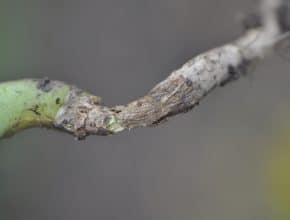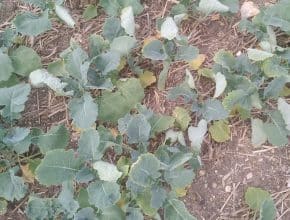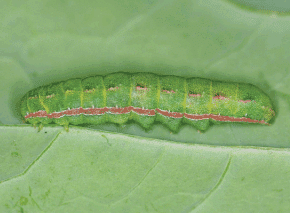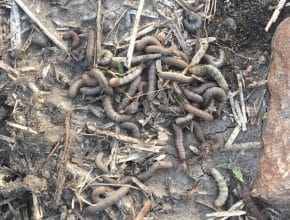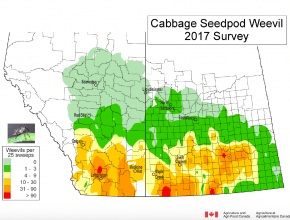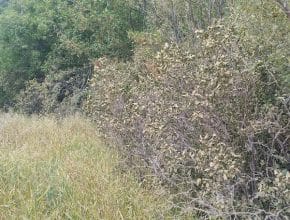Home / Canola Watch / Page 105
-
These can be hard to tell apart sometimes. Pinched or otherwise damaged-looking stems can occur with all three. Here’s how to tell them apart…
-
CCC agronomy specialist Angela Brackenreed describes the moisture situation at her sentinel field, including a comparison of soil moisture reserves for 2018 versus 2017…
-
Michael Harding with Alberta Agriculture & Forestry recently compared 10 disinfectant solutions to see which is best to kill clubroot spores on machinery, tires and boots, etc. Four of those 10 products achieved 95% inactivation of clubroot resting spore viability, qualifying them as effective. Of the four, bleach achieved the 95% threshold at very low concentration (2%) and bleach is…
-
Clover cutworm damage has been confirmed in a few fields around Weyburn, Saskatchewan. They are a climbing cutworm and can be easily confused with bertha armyworm. The most distinct difference between the two species is the wide stripe along each side; it is yellowish pink on clover cutworm and yellowish orange on bertha armyworm…
-
Look at these six images from canola fields this week and determine if what you're seeing is normal or not normal…
-
Two CCC agronomy specialists heard this week of high cutworm damage in canola fields seeded into canola stubble. Canola on canola has many potential yield risks and we can add heavy cutworm feeding to that list…
-
With earliest canola fields starting to flower in southern Alberta and southwest Saskatchewan, cabbage seedpod weevil scouting season begins. Here is the forecast map for 2018 based on 2017 surveys…
-
Unexpected carryover can occur when dry conditions in the year of application slow the expected pace of breakdown of herbicides. Unexpected residue damage is a risk any time a sprayer is left full while waiting for an opportunity to spray, or when sprayers are not effectively cleaned between crops and between products…
-
Low wind and clear skies can cause inversions, which can increase the risk of spray drift. This article explains how to identify (and avoid) an inversion scenario when spraying. The……

